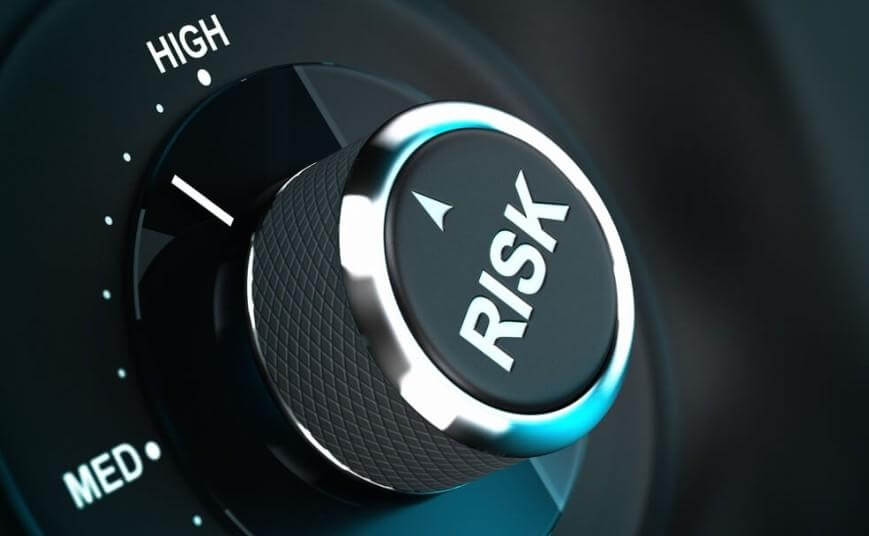Typical Risks in Project Management and 8 Tips on How to Avoid Them

There is no project without threats of risks. It doesn’t matter if a project simple or complex. If a project manager wants to manage projects successfully, he/she needs to know what those risks are and be able to deal with them like a pro.
In this post, I combine some of the typical project management risks and some ways to avoid them.
Project risk management
Risk management is an essential part of project management. PMBOK by Project Management Institute shares the idea that risk management in projects belongs to the ten knowledge areas that should be a competence of any PM.
According to PMI, project risk is “an uncertain event or condition that has a positive or negative effect on a project’s objectives.”
The crucial idea is that effective risk management depends on supporting organizational factors, well-defined roles and responsibilities, and clear technical analysis.
This kind of management may begin with recognizing a threat, or by examining an opportunity. Sometimes it is possible to begin an analysis of alternatives, generating cost and development estimates for potential solutions.
Actually, before listing the risk categories, let’s define all of them as:
- Threats – these are negative risks, and
- Opportunities – these are positive risks
What are the main types of project management risks?
- Estimating time and risks. When you implement a project, you always care about how to estimate it correctly. Actually, it’s not easy to come up with exact estimations because every single site or app is somewhat unique.
- Change of project requirements. Sometimes customers may surprisingly change their vision of how the product or certain features in it should look like. It’s almost impossible to be prepared for the change of requirements, however, it’s one of the things that you need to consider.
- Unclear specifications. Incorrect project initiation may lead to unclear specifications that cannot be complete enough for developers to act.
- Unforeseen circumstances. We all are human natures and even the most talented and responsible project manager may suddenly get sick. This reason may delay the project for an indefinite period of time or even derail it.
- Technical risks. One of the most challenging risks is about budget cut. It’s when you need to satisfy customer’s requirements while being low on resources.
- Unavoidable risks are similar to unforeseen circumstances. These are risks that can’t be controlled or estimated: it can be technology discontinuing, government policy’s changes, market requirement and so on.
According to the other classification, the types of risks and concern to projects can be divided into the following groups:
- Strategic risks that can occur in the result of the errors in strategy. For example, choosing a technology that can not be made to work.
- Governance risks that relate to management performance with regard to the company’s reputation and ethics issues.
- Operational risks that may appear from poor processes and implementation (procurement, production, or distribution).
- Legal risks are about legal and regulatory obligations. They include contract risks and litigation that can be brought against the company.
- Market risks that include the processes with foreign exchange, commodity markets, interest rates, credit risks, and so on.
- External hazards that are also kinds of risks – floods, earthquakes, storms, vandalism, terroristic acts; labor strikes, civil unrest, etc.
Any project manager will agree that the path to successful project implementation is not only long but also full of certain risks. Here are some tips and rules that can be helpful if you want to avoid or minimize risks and manage projects efficiently.
8 tips on how to avoid the common PM risks
1. Identify risks early
You should be able to analyze the whole project and put down all potential challenges that may occur in the very beginning.
2. Add brainstorming and collaborative meetings
They are also a good way to identify risks. It’s important for every team member to understand their scope of work and responsibilities.
3. Stay in touch with customers
Inform them about everything that can somehow affect the project, including potential risks to avoid any conflict situations or misunderstandings.
4. Do not neglect good opportunities
It’s better to always have enough time on outlining both risks and opportunities to improve things. It’ll help your customers to save their time and money.
5. Prioritize risks
As there are many kinds of risk, each of them affects the projects differently. Do not forget to focus on the project management risks that cause the biggest losses and deal with them first. For these aims, you may use standard approaches for prioritization, for example, a simple 2×2-prioritization matrix or complex methods for scoring (RICE, ICE, Weighted scoring, Kano model, etc.)
6. Create a risk response plan
Discuss all the current questions and potential risks together with your team during daily meetings. Clear communication and a well-prepared contingency plan will definitely improve the development processes.
7. Track every risk
Pay attention to the smallest ones as they can quickly turn into a big problem. This will allow you and your team to avoid essential mistakes in future projects.
8. Use appropriate tools and techniques for risk identification
For example:
- Delphi technique. It’s when a team of experts is consulted anonymously. A list with required information is sent to experts. Responses are compiled, and results are sent back to them for further review. The consensus is reached.
- SWOT analysis (Strength, Weakness, Opportunities, and Threats)
- Interviewing that can be conducted with all project participants, experts, and stakeholders.
- Root cause analysis, when root causes are further used to identify additional risks.
- Checklist analysis, when the checklist of risk categories is used to come up with additional risks for the project.
- Assumption analysis. Identification of different assumptions of the project also helps in identifying project risks.
Make risk management part of your project
This is also one of the tips on how to avoid risks, however, let it be a separate and essential rule: if you don’t seriously embed risk management in your project, you will not reap all the benefits of this approach.
Of course, some project teams use no approach whatsoever to risk management. They are somehow confident that no risks will occur in their project cycle. However, professional companies make risk management part of their day to day operations. They definitely include it in project meetings and the training of staff.
Once you identify the source of risks that may occur, it will be easier to solve them and include them in your planning.
Hopefully, you’ll not face them at all. But be ready to manage risks and have great projects!






